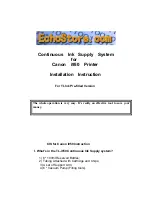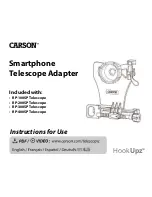
Battery Charging
Discharge Characteristic
Correct battery charging ensures the maximum
possible service life for the battery.
There are three major methods of charging:
Constant Voltage Charging
Constant Current Charging
Two Stage Constant Voltage Charging
This is the recommended method of charging for VRLA
batteries. It is necessary to closely control the actual
charge voltage to ensure that it is within the limits
advised.
Float Service: 2.25-2.30 Vpc at 20 C
Sacredsun suggest that the initial current should be
set within 0.3C Amps for TS/ 0.3 C Amps for TM.
This method of charging is generally not
recommended for VRLA batteries. It is necessary to
understand that if the batteries are not removed from
the charger after reaching a state of full charge,
considerable damage will occur to the batteries due to
overcharging.
This method should not be used when the battery and
load are connected in parallel. If this method is to be
used, it is suggested that the ABT technical
department is contacted.
Although the batteries are of the recombination
type and the amount of gassing at normal
operating voltages and temperature is negligible, if
the charging voltage is increased, gassing will
occur despite the recombination design of the
product. Gassing does not normally occur while the
battery is operating under float conditions and
normal constant voltage recharge of 2.25-2.30 Vpc
at 20 C. Very little gassing occurs when the battery
is recharged under normal cycling recharge
procedures. However, higher voltages especially
under conditions of constant current charging will
substantially increase the volume of gas.
The discharge curves show the minimum design
parameters for each fully charged battery after
installation. Full capacity is reached after some
initial service.
Float Service.
One month after installation and recharging.
Cycle Service.
Within three to five cycles after initial charge and
service entry.
1. Constant Voltag Charging
2. Constant Current Charging
3. Two Stage of Constant Voltage Charging
Effect of Temperature on Charging Voltage
Battery discharge characteristics
General Comments
Effect of temperature on capacity:
o
o
Cycle Service: 2.40-2.50 Vpc at 20 C
It is necessary to charge a greater amount of energy
into the battery than was taken out of the battery on
discharge. The actual current indicating that the
battery is fully charged is approx 2mA/Ah under
charging voltage is 2.30Vpc@20 C.
As temperature rises, electrochemical activity in a
battery increases. Similarly, as temperature falls,
electrochemical activity decreases. Therefore,
conversely, as temperature rises, charging voltage
should be reduced to prevent over charge, and
increased as temperature falls to avoid undercharge.
In general, to assure optimum service life, use of a
temperature compensated charger is recommended.
The recommended compensation factor for TS&TM
batteries is -3mV/ C/Cell (stand by). The standard
center point for temperature compensation is 20 C.
The discharge capacity of a lead acid battery varies
and is dependant on the discharge current,
discharge temperature and end voltage. ABT
TS/TM... use a discharge rate at the 20-hour rate.
i. e. the capacity of the battery at 20 hours
discharged to an end voltage of 1.75Vpc at a
temperature of 20 C.
Rough correction factor of the capacity, according
to the temperature, reference temperature
being 20 C.
o
o
o
o
o
o
20
20
4.
5.Effect of Voltage on Battery Gassing
Characteristic discharge curve for TS/TM...W
3C
1C 0.75C
0.18C
0.1C
13.0
12.0
11.0
10.0
9.0
8.0
1
2
5
10
20
60
2
5
10
20
Voltage
Min
H
Discharge time
10
THUNDER
TS
...W
SERIES
M
/
B
a
tt
ery
Charging

































